What are mangroves?
(Published in the newspaper Amigoe on the 13st of August 2025)
Check out this new series about mangroves! Mangroves are shrubs and trees that live in coastal areas. They’re super important, but they’re not as big as other ecosystems like rain jungles or deserts. Rain jungles cover 11% of the Earth, while deserts cover 22-25%. But mangroves are crucial because they protect both marine life and life on land. They’re especially important in places like Curaçao, where they grow along the coast and in some bays. That’s why we’re excited to explore this special and important ecosystem in this series!
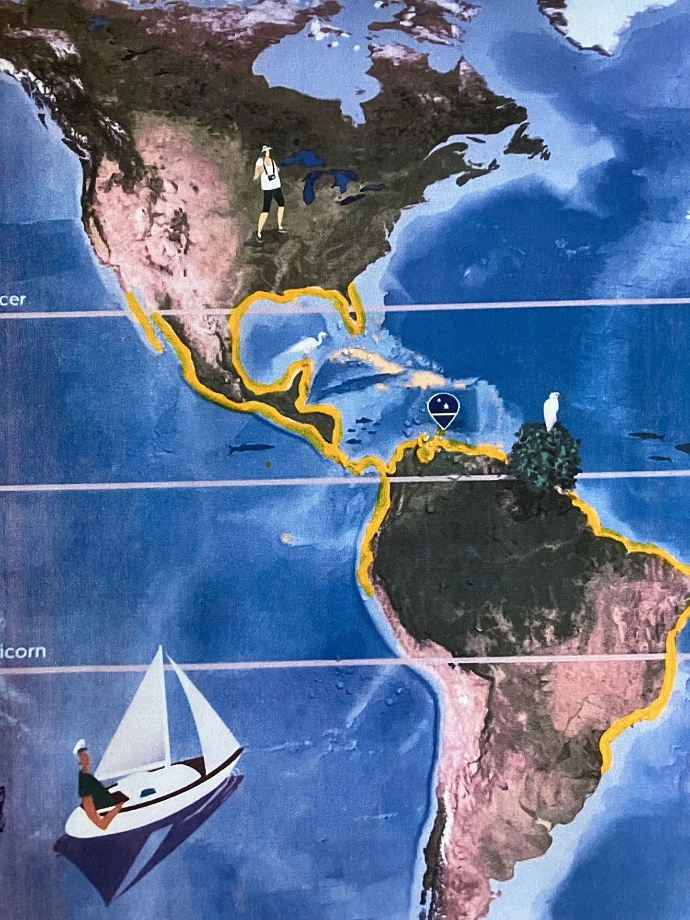
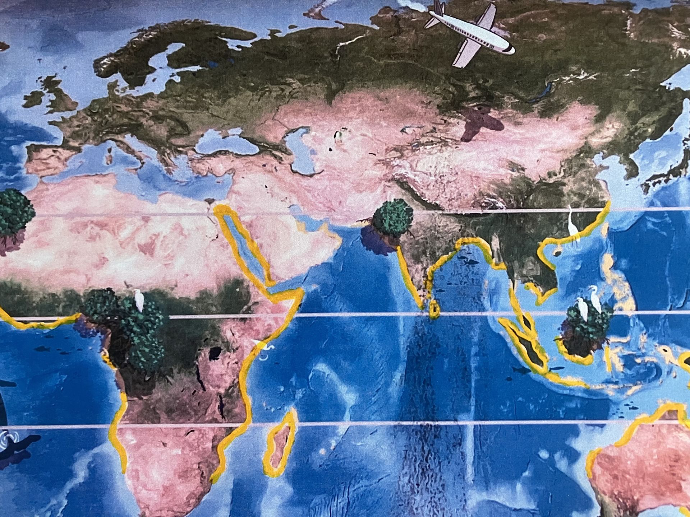
The mangrove distribution area in the world (in yellow)
(Information board in the Curaçao Rif Mangrove Park)
Mangroves thrive in the area where land meets sea, typically in tropical and subtropical coastal regions where freshwater and saltwater mix (tidal areas, estuaries, lagoons). They’ve adapted to survive in soil with salty or brackish water. Brackish water is seawater that’s been mixed with rainwater or river water, making it less salty than regular seawater.
Did you know that there are over 80 different types of mangroves around the world? Each one has its own unique way of growing. But they all have one thing in common: they can thrive in the same environment, which is usually muddy, low-oxygen soil with salty or brackish water in tropical areas. Each mangrove species has figured out how to adapt to these specific conditions in its own special way.
In Curaçao, we’ve got four types of mangroves: the red mangrove (Rhizophora mangle), the black mangrove (Avicennia germinans), the white mangrove (Laguncularia racemosa), and buttonwood (Conocarpus erectus). The red mangrove is the closest to the coast, followed by the black mangrove, and the white mangrove is the closest to land. Buttonwood grows higher on the coast. Since it grows just on the edge of a mangrove area, it’s not considered a true mangrove and is also called a mangrove companion.
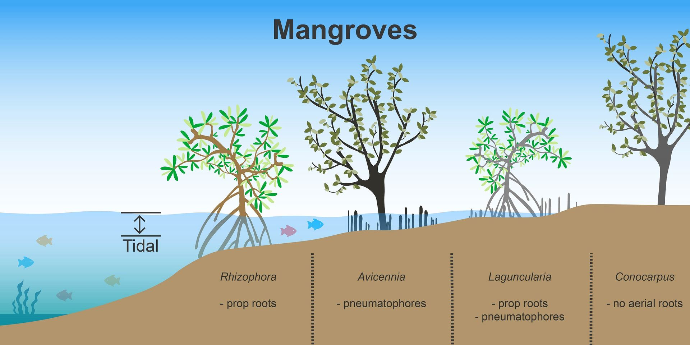
The mangrove sequence
Credits: Jungle Leaves
Mangroves thrive in salty and oxygen-poor soils that other plants can’t grow in. Let’s dive into the main characteristics of these soils. I’ll break them down for you in more detail below.
Muddy, soft soils that offer no support
Trees can grow very tall because their roots are firmly anchored in the soil so that they do not fall over. But there’s a lot of mud in the tidal areas. Muddy soil is soft, so the roots have a hard time gripping it. Trees that grow in muddy soil can easily fall over. But mangroves have special adaptations to grow in these soft soils. For example, the red mangrove has stilt roots. Check out the photo!
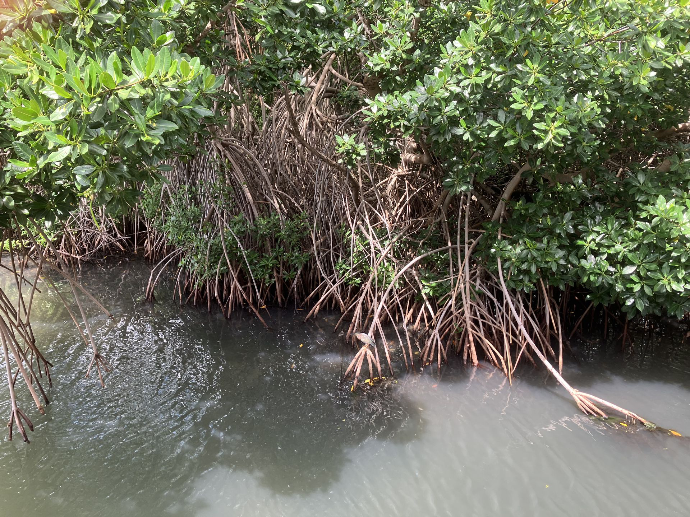
The stilt roots of the red mangrove in the Curaçao Rif Mangrove Park
High salt content
Seawater is salty. Seawater contains 35 grams of salt per litre. This is 6 teaspoons per liter of seawater!
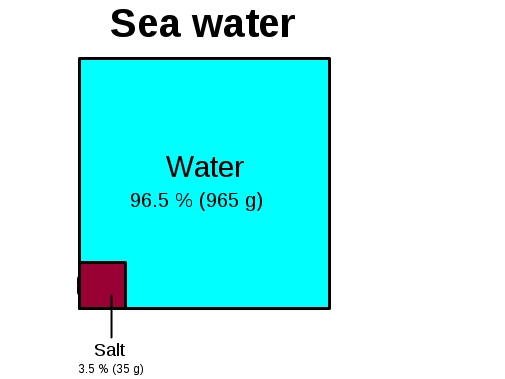
Credits: LEARNZ
Plants and trees usually don’t like salt in the water. Salt attracts water, and the salt in seawater pulls the water out of the plants, making them droop and die. So, plants and trees usually can’t grow in salty soil. But if you want to grow in salty soil, you need to make some changes. For example, the black mangrove can get rid of salt through its leaves. Check out the picture below!
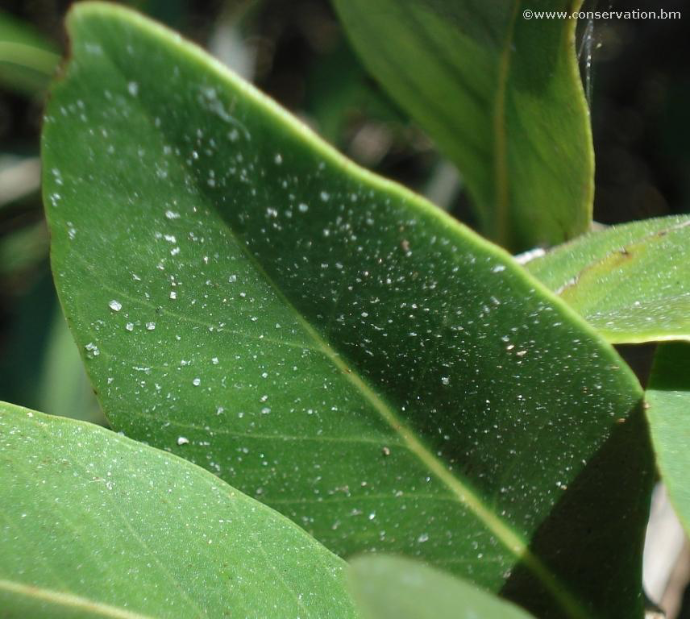
Excretion of salt through the leaves
Photo Credits: Government of Bermuda
Oxygen-poor conditions
Mangroves are amazing plants that can thrive in tricky conditions. You see, the soil they grow in is super muddy and full of water. Now, plants need water to grow, but too much water can be a problem too. Roots need oxygen to breathe, and if the soil is completely flooded, there’s no air for them to take in. Without oxygen, the roots can’t do their job and can’t absorb water. And guess what? The plant will die from water deficiency, even though it’s sitting right in the middle of water! But mangroves have some cool tricks up their sleeves. They have aerial roots that grow up from the soil. These roots can breathe and bring the air to the roots. Check out the picture below to see how they do it!
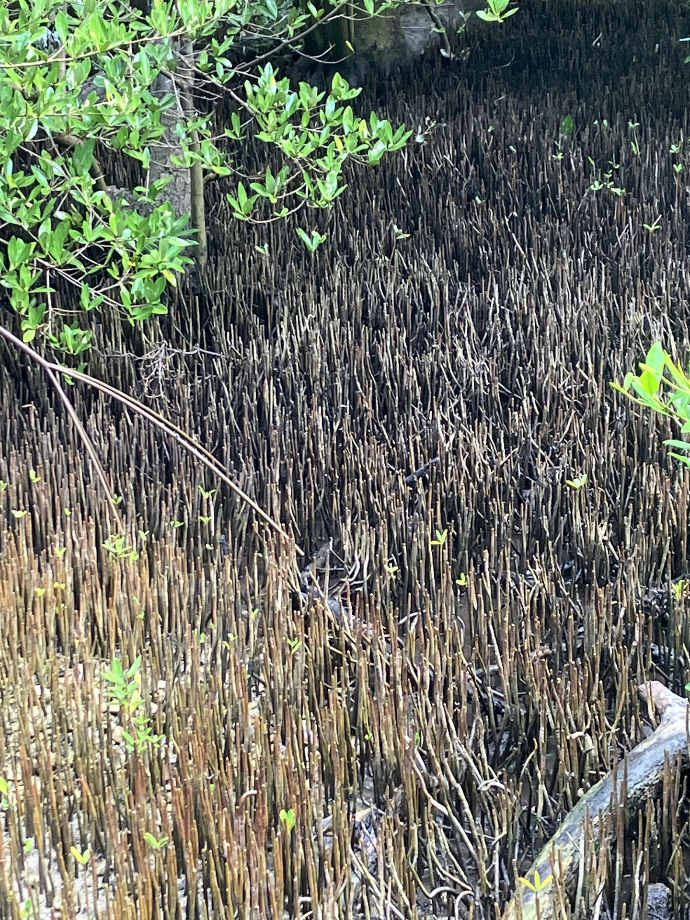
Aerial roots black mangrove in Curaçao Rif Mangrove Park
Mangroves are super adaptable plants that can thrive in places where other trees can’t. They’re specially designed to grow in soft, salty mud with low oxygen levels. But here’s the catch: if you cut down a mangrove, no other tree will take its place. Most other trees can’t even grow in the same conditions as mangroves!
This is the first article in the series on mangroves. In these articles, we’ll start by exploring the four types of mangroves found in Curaçao. Then, we’ll dive into why mangroves are so crucial to the island. After that, we’ll talk about the challenges facing mangroves. Finally, we’ll explore ways to protect these amazing trees.
In the next article, we’ll focus on the red mangrove (Rhizophora mangle), also known as “Mangel di tam” in Papiamento. Among all mangroves, it’s the one that usually grows closest to the sea.
1.What are mangroves?